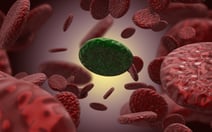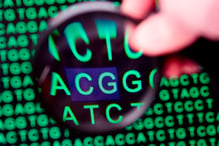Originally published : Thu, November 10, 2016 @ 10:23 PM
Updated : Mon, November 21, 2016 @ 3:32 PM
In the early 1900s, scientists found that the function of genes was to make proteins, disproving the earlier idea that genes make proteins themselves. This greatly impacted medical treatment. While it is difficult to change a defective gene that causes disease, some genetic conditions can be treated more directly by replacing a missing protein. For example, hemophiliacs can be treated with a blood-clotting enzyme that their bodies, due to their genes, cannot produce themselves.
earlier idea that genes make proteins themselves. This greatly impacted medical treatment. While it is difficult to change a defective gene that causes disease, some genetic conditions can be treated more directly by replacing a missing protein. For example, hemophiliacs can be treated with a blood-clotting enzyme that their bodies, due to their genes, cannot produce themselves.
Since proteins were products of genes, what was the chemical basis of heredity? Science set out to answer this question. Two American scientists, George Beadle and Edward Tatum, set out to prove the existence of DNA using simple bread mold that was treated with radiation to create mutations. The mutant mold was crossed with normal mold. While some of the offspring multiplied naturally, others only multiplied after arginine, a specific amino acid, was added. The scientists discovered that the molds had inherited a gene mutation for an enzyme vital to producing arginine. Unless that amino acid was added, the mold couldn’t grow. They concluded genes contain the instructions to make enzymes or the proteins they make. The proteins that genes make, or do not make, impact the cell chemistry rather than the genes themselves.
 The chemicals that encode genetic information on DNA are called bases and are written by four letters - A, C, G, and T. They usually bind in pairs – A to T and C to G. Mutations occur when a base mutates, such as A to G, so that a G is mistakenly bound to a T. While only four options, these bases make up DNA code differently to create humans, cows, snakes and trees. It builds the genes that produce proteins and the genetics to turn those proteins on an off. DNA can duplicate itself, so the entire code is reproduced every time a cell divides. In today’s terms, think of it as the software for life, it contains the code needed to create a human body and make it operate.
The chemicals that encode genetic information on DNA are called bases and are written by four letters - A, C, G, and T. They usually bind in pairs – A to T and C to G. Mutations occur when a base mutates, such as A to G, so that a G is mistakenly bound to a T. While only four options, these bases make up DNA code differently to create humans, cows, snakes and trees. It builds the genes that produce proteins and the genetics to turn those proteins on an off. DNA can duplicate itself, so the entire code is reproduced every time a cell divides. In today’s terms, think of it as the software for life, it contains the code needed to create a human body and make it operate.
Reference: Henderson, Mark, Joanne Baker, and A. J. Crilly. "Chapter 5 - Genes, Proteins and DNA." 100 Most Important Science Ideas: Key Concepts in Genetics, Physics and Mathematics.

